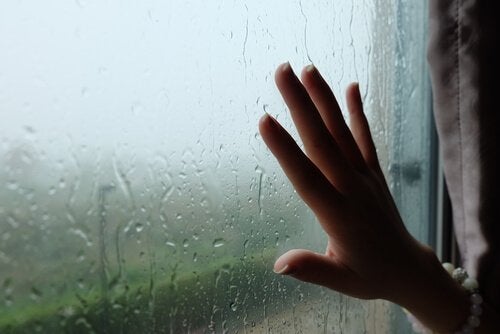People with some kind of phobia know that when the event that triggers them occurs, they experience great suffering that they would like to avoid, there arephobic stimuli that occur very occasionally, and it is even possible to avoid what triggers them. , however, they are very common, such as the phobia of rain.
Rain is characterized by an intense fear of everything related to rain, i. e. storms, lightning, lightning, thunder, etc. , so it is a phobia that can become very invalidating, because the feared object can be very widespread and occur very often.
- It’s also called ombrophobia.
- Its manifestation can occur throughout life.
- Although it is more characteristic during youth and early adulthood.
Anxiety is a small stream of fear that travels through the mind, if it feeds, can it become a strong current that drives all our thoughts?Roche-
When a person suffers a phobia, their nervous system reacts as if they are exposed to a very serious threat, depending on the degree of phobia, the situation can be equated even with what our ancestors felt when they are persecuted by an animal, or what we feel today if we are on a road with the train coming towards us.
As a result, this generates an anxiety-dominated mood, which can even become a panic attack.
The most common symptoms are hyperventilation, gastrointestinal disturbances, tachycardia, feeling pressure in the chest and head, dizziness, headache, shortness of breath, etc. , all of which represents a great suffering for the person, which in many cases leads him to take steps to avoid the stimulus.
Phobias can be the effect of the evolution of a fear, that is, starting from a small fear and evolving until we feel the same terror that one would feel when faced with a threat that we think is mortal. Anxiety will also depend on the severity of the meteorological phenomenon (intensity of the phobic stimulus). It will not be the same if it is a small drizzle or a big storm.
It is a type of phobia typical of this physical phenomenon, so anyone can develop it, it is not necessary to have conditions that predispose to suffer this type of psychological change.
It usually triggers a negative experience in relation to torrential rains, floods, severe storms, lightning or any particularly strong weather phenomenon of this type, as the psychologist Arturo Bados says.
In such cases, the person feels very vulnerable to the force of nature, so he would learn an association between certain natural phenomena, in this case related to rain, control and fear, so this association would come into play. whenever thephobic stimulus was anticipated or produced.
The first thing to do when you have a phobia of rain is to call a specialist to evaluate the severity of the problem, the causes that trigger it, and the symptoms and reactions they cause to determine which intervention is most recommended in each case.
Central intervention is usually based on exposure with response prevention, consisting of exposing the person in a fictitious way to the causes and events that trigger the phobia for short periods set by the specialist, which will increase at his discretion.
With this exposure we seek to produce anxiety and reduce that same anxiety within the exposure itself. The person is not allowed to give the avoidance response until the decrease has occurred.
Rain is one of the phobias that affects those who suffer most, because it is impossible to isolate themselves from the factor that generates it, that is, rain, storms and other weather events, so the sooner we find a solution, the better.
“The man who is afraid surely invents danger to justify his fear. “Alain Emile Chartier.

